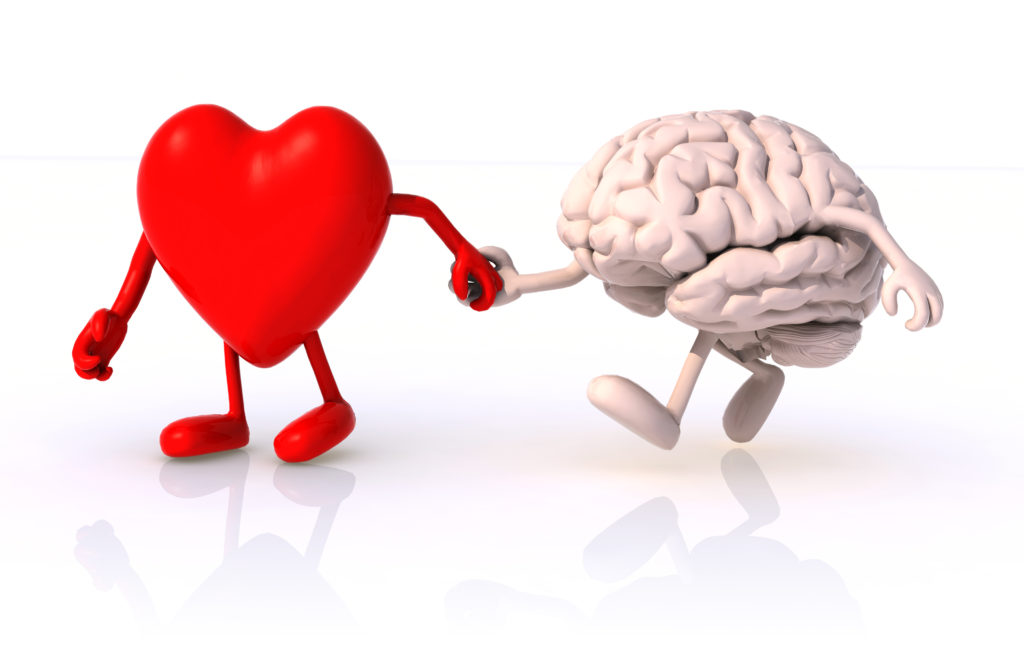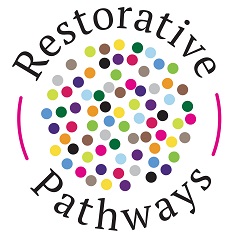How Does Emotional Literacy Enhance Restorative Practice?

Emotional literacy is a term bandied about in education and mainstream media, but what is it exactly? And more importantly, how does it enhance our work in the field of restorative practice? Being literate in something means you have a sound understanding of the concept and its structural elements along with the ability to flexibly apply the concept in various contexts. Having emotional literacy then suggests a sound understanding of emotions – for example, their origins, their purpose, neurological and physiological components, their evolution over time, cultural distinctions, etc., and be able to use that information to benefit (or not) self or other in a variety of settings.
This article explores two comprehensive theories of emotion: affect script psychology (Tomkins, 1984), and the broaden and build theory of positive emotion (Fredrickson, 1998) in the context of restorative approaches. We begin first with affect script psychology.
According to the late Silvan Tomkins, all mammals are hard-wired from birth to experience nine affects, including:
Interest-excitement
Enjoyment-joy
Surprise-startle
Fear-terror
Distress-anguish
Anger-rage
Embarrassment-humiliation
Disgust
Dissmell
Most of these affects vary in intensity on a continuum depending on factors like the trigger itself and previous life experiences, for example, low-level intensity enjoyment through to high-level intensity joy.
Tomkins applied this theory to explain human motivation and behaviour, especially in a social context. You may have noticed the imbalance between the number of positive and negative affects. This is, of course, about survival, but not just preventing death, preventing social isolation and harm too. Tomkins suggests that humans are driven to maximise our positive affect, minimise our negative affect, and we are healthiest and happiest when we freely express all affect (without inhibition). This theory supports the notion that each affect is a necessary element of the emotional system, even the affects that feel inherently distressing or painful, such as embarrassment through humiliation.
Embarrassment-humiliation, from here on referred to as shame, sends a strong message that positive affect has been interrupted, particularly in social settings. We understand humans are social creatures and that much of our behaviour derives from our need to connect and belong. The role of shame affect is to alert us to lost or damaged connection with others so that we are motivated to fix it and reconnect. Understanding shame and its role in relationship management is foundational within restorative practice. It changes the way practitioners and schools approach this work. For an extended summary of ASP and shame applied to schools and restorative work, check out my previous two-part blog ‘The hammer is but one tool’.
The vital role of negative emotions is universally understood as a strong motivating force for human survival. Negative emotions narrow our cognition, thoughts, and actions; for example, fear triggers the well-known response pattern of fight-flight-freeze. This narrowing ensures we focus on the problem or threat and act quickly to remove it. In these situations, it doesn’t fare well to spend time problem solving or coming up with creative solutions. In today’s modern world, we face fewer dangers that would warrant such a narrow, fast-acting response system. Instead, we require the flexibility of thought and behaviour to cope with dynamic environments, and this is precisely where positive emotions serve us well.
Until recently, less has been published about the role of positive emotions aside from understanding that they feel good. The work of Barbara Fredrickson and colleagues has generated significant scientific evidence explaining the distinctive role and mechanism of positive emotions in human cognition, behaviour, health, and wellbeing. The broaden and build theory of positive emotion (Fredrickson, 1998) suggests that experiencing positive emotion broadens our awareness and encourages novel, varied, and exploratory actions and thoughts. When we broaden our perspective, cognition, and behaviours we tend to build enduring physical, social, psychological, and cognitive resources. For example, experiencing the positive emotion interest may lead people to approach others, form new connections, seek out new information, or innovate. These actions can broaden our understanding, thoughts, or social circles; this, in turn, provides further opportunity for us to experience positive emotions in an upward spiral (Fredrickson & Joiner, 2002).
Tomkins and Fredrickson recognised the symbiotic nature of negative and positive emotion. The two are not dichotomous, but rather resemble an intricate, interdependent relationship. Understanding and applying this can enhance our restorative approaches to mistake-making and amplify the teaching and learning component within.
The Intersection of Theory and Practice
Restorative work is human work; excellent practitioners understand the powerful role of positive and negative emotion in social contexts. When relationships are harmed by mistake-making, shame is triggered. As a negative emotion, shame narrows perception, cognition, and behaviour. Restorative work requires people to agree to come together (see the benefit), talk through mistakes (perspective & empathy), and negotiate reparative action (problem-solving, creativity). Essentially restorative work requires a broadening of perception, cognition, and behaviour. Applying the broaden and build theory, positive emotion is the mechanism by which this broadening can take place. The question is, how can we possibly engage positive emotion in the wake of harm or relationship damage? After years of working restoratively in schools, here are some of my ideas around this.
- Time is of the essence, literally. Negative emotion requires time to metabolise, to dissipate somewhat. This time frame will be different for different individuals and will vary according to the level of harm experienced. Begin by asking stakeholders to indicate when they might be ready to chat (offer the use of non-verbal signals or cue cards, too). Offer emotional resources in the meantime, for example, time alone or with others, visual aids, sensory objects, safe, quiet spaces, music, or physical activities.
- Our first emotional goal is engaging interest. Interest in coming together to fix things up. Interest in finding out how this mistake came about. Interest in not feeling terrible about what happened anymore. Interest in being able to move on. Ideas to trigger interest include, be nurturing and caring, explain the restorative process and expected outcomes, rehearse the chat, explore the options for managing the harm, use storyboards or visuals to explore the process, use peer mentors/mediators or describe/show what the future looks like when the mistake is fixed.
- During the restorative chat itself, interest can be triggered throughout using carefully crafted questions and statements. For example, openly acknowledging and praising those who take responsibility for mistakes, explicitly pointing out that you (as facilitator) are not mad/sad/angry but are there to help, normalising all emotions by making explicit statements (it is ok to be upset about that, it is entirely reasonable to be nervous right now), paraphrasing participant statements using questions such as, ‘so now you think that [insert behaviour] was a bad choice and made things worse?’ or, ‘so you feel worried every time you have to go to the science lab now because of what happened?’.
- Enjoyment can be triggered (carefully) during the chat; this makes more sense if we understand low-level enjoyment to be relief or contentment. These emotions often occur naturally when the mistake-maker takes responsibility for the harm caused. With this positive emotion triggered, it can be an excellent time to encourage a broadening of perspectives by way of acknowledging the universality of mistake-making, garnering empathic responses from all parties (through paraphrasing and questioning) or inviting supporters (caring friends and family) to offer words of encouragement.
- Enjoyment can also be triggered using humour wisely. Humour is a great tension release and provides a signal that relationships are on the mend. It is a skilled facilitator who can weave in appropriate humour towards the end of restorative conversations. Enjoyment is often experienced when restorative chats come to a close; this is why having refreshments following community conferences are a vital element of this highly structured process. At this time, enjoyment may be experienced as relief or contentment. It may also be experienced more intensely (moving towards joy) because the people involved have a sense that the relationship is repairing, and they are hopeful for the future. Either way, facilitators aware of positive emotion can use the opportunity to engage participants in solution-focused conversations where perspective, empathy, problem-solving, and goodwill are required to explore mistake-fixing and prevention.
As the broaden and build theory suggests, when positive emotions occur during restorative conversations, participants build enduring resources that are accessible in the future. Included would be social resources such as self-awareness and self- management, cognitive resources such as perspective-taking, problem-solving, reasoning, empathic listening, negotiation, and psychological resources such as resilience, emotional management, self-esteem, and coping strategies.
In the same way that our words and actions can trigger positive emotion in restorative work, they can also trigger negative emotions. Just changing the tone of our voice is capable of provoking embarrassment or fear. The skilled practitioner has high levels of emotional literacy and uses strategies such as mindfulness to assist them in managing the emotional needs of all participants (and themselves) in a restorative process.
The opportunity to help young people build enduring, beneficial resources provides further support for restorative approaches over punitive approaches to mistake-making and disciplinary procedures in schools. The impact of emotional literacy in restorative approaches has a significant effect. The question now is, how best do we support teachers using restorative practice to develop these necessary emotional literacy skills?
References
Fredrickson, B. (1998). What good are positive emotions? Review of General Psychology, 2(3), 300-319.
Fredrickson, B. L., & Joiner, T. (2002). Positive emotions trigger upward spirals toward emotional wellbeing. Psychological Science, 13(2), 172-175.
Tomkins, S. S. (2008). Affect Imagery Consciousness: The Complete Edition. New York: Springer.

Add A Comment